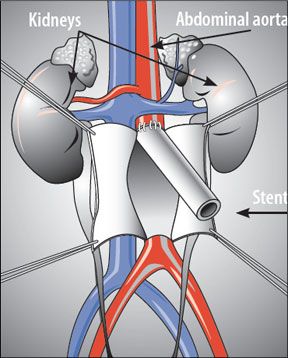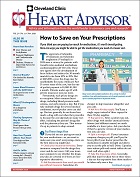Atherosclerosis, the disease that causes coronary arteries to become narrowed with fatty plaque, can also degrade elastin in the artery, causing the wall to weaken and develop a bulge (aneurysm). When this occurs in the aorta, the main artery carrying blood from the heart, the result can be catastrophic. Every year, 15,000 people in the U.S. die when an aortic aneurysm bursts. So repairing aneurysms before they rupture saves lives. Elective repair, which has a mortality rate of one to three percent, is much less risky than emergency repair, during which 25 to 50 percent of patients die. "Ideally, patients should have elective repair. However, identifying who has an aneurysm is problematic, since symptoms are uncommon until rupture occurs," says Daniel Clair, MD, Chairman of Cleveland Clinics Department of Vascular Surgery.
To continue reading this article or issue you must be a paid subscriber.
Sign in






